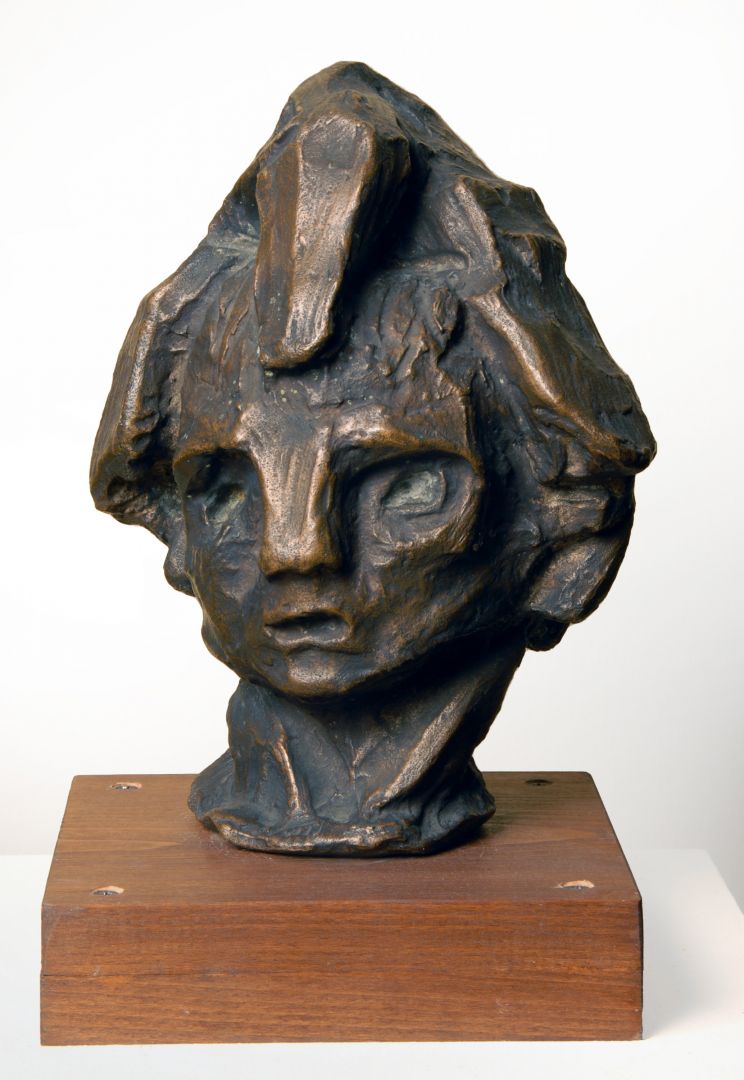The Experimental Youth - 4. view
Child’s Head after the War
VILT Tibor
Budapest, 1905 – Budapest, 1983
Child’s Head after the War, 1946
Dealing with the monstrosities of the war became a fundamental attitude in art, and this was gradually seen as a task programmatically undertaken by members of the art group known as the European School. Head of a Child after War, by Tibor Vilt, is an emblematic work that achieves its dramatic power using the simplest of sculptural devices. This sculpture, drastically cut off right beneath the convulsively clenched muscles of the child’s neck, reveals just the head and face, its fragmentation already a symbol of destruction. Vilt underlines his tragic message through contortions: the peak of the forehead juts out strikingly high compared with the rest of the face, the eye sockets are deeply buried, the narrowed lips are slightly parted, the bridge of the nose is broad and squashed in, and the curls of hair form an uneven, matted surface – every element conceals the child’s features as though with a mask, yet at the same time lays them bare. The distortions in the child’s face are simultaneous allusions to pain, horror, mortality and survival.
